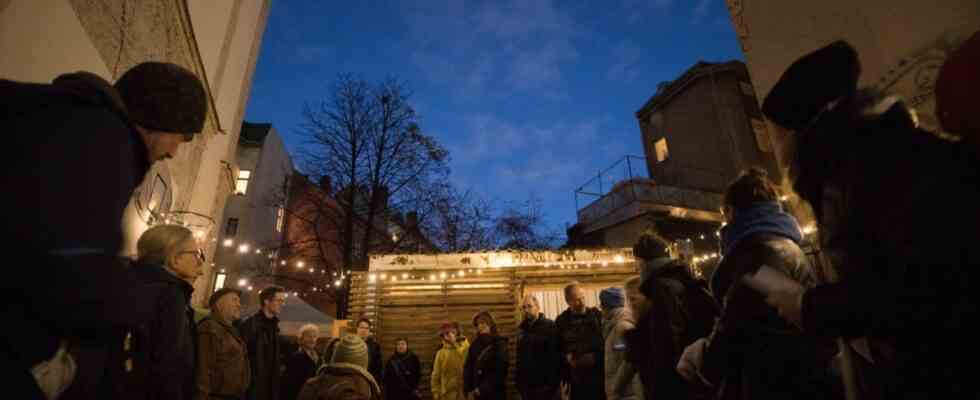In Munich, the housing shortage is increasingly affecting those who could actually afford it. The pressure on the remaining properties is increasing. Refugees, the homeless, the poor, single parents, the sick: they all have little chance of finding a place to stay on the regular market. A new residential project in Haidhausen wants to change that – and at the same time close an unwelcome old vacant lot.
The sun has already set. It’s actually too dark to guarantee a good view. However – what is spectacular to look at at Metzgerstraße 5a in Haidhausen? There is a high wooden fence, behind it a dusty gravel area with a tree and bushes. Garden tools, beer benches, toys. It’s one of those dreary Munich backyards that local residents like because of its unadorned look.
But the backyard sadness should soon be over: the wasteland on Metzgerstrasse is to be developed with a new apartment building. By 2024, the cooperative “Kooperative Großstadt” and the non-profit association “Gemeinwohlwohnen” want to realize a self-managed, inclusive housing project called “Metso Metso” on the site. The five-story residential building will have a total of 730 square meters of floor space.
The Großstadt cooperative was awarded the contract by the city for the 168 square meter property not far from Johannisplatz in 2020. It is one of the few small inner-city areas that have been approved by the city as cooperative building land. The cooperative acts as the client in the project. The Verein Gemeinwohlwohnen will rent the building as a house association. The tenants each receive their own rental agreement.
A future “resident”: Samuel Flach.
(Photo: Florian Peljak)
On Metzgerstrasse, the nine people who have come together for the project so far – later there will be 16 – simply call themselves “residential”. Among them are people with disabilities, refugees from Somalia and Uganda, single parents and artists who live there in shared apartments and want to support each other in everyday life. This could be anything that makes everyday life easier, from translating when going to the authorities to doing the weekly shopping for the roommate and helping them get to bed. The aim is to live together there in a grassroots-democratic manner.
“Not everyone wants their roommate to help them shower and vice versa. That’s fine, but there is an expectation that people will contribute their skills to the household,” explains Samuel Flach. He organizes the public relations for the association, has many years of experience with inclusive living concepts and will move into a room himself. During his studies, he founded his first flat-sharing community, in which he lived with fellow students who supported him – who is paraplegic and uses a wheelchair – in leading a self-determined life. Today he lives in a cluster apartment belonging to another cooperative.
Flach therefore knows what he is getting himself into and what barriers need to be overcome. He was actively involved in the planning phase. Just like the residential project itself, the planning of the new building is also innovative. It is scientifically supported by the chair for housing and basic design at the Rheinisch-Westfälische Technische Hochschule Aachen and has also been funded by the Federal Ministry for Housing, Urban Development and Building. At the beginning of the year, architects, landscape planners and construction experts were able to submit ideas. It was then decided collectively what to implement. Both planners and future users have a voice. “For architects, there are first of all standards in a wheelchair-accessible house,” explains Flach. “I was able to explain to them that it’s not just about door width, but how window height, elevators or floors interact.”
The house will close a gap in the row of facades on Metzgerstrasse, which has been gaping since the 1970s. A community and event room is to be built on the ground floor, “that’s how the project affects the neighborhood and promotes exchange inside and outside the building,” says Flach. Although the new building will not be Munich’s first inclusive cooperative project, forms of housing based on solidarity are still the exception. “We want to prove and set an example that inclusion is really possible.”
The dreary courtyard, in which green has grown up in many corners, will be preserved. There is now a new wooden pavilion there, with fairy lights hanging from one end to the other. Festivals are celebrated there. And so the project is already giving off a little of its radiance.

